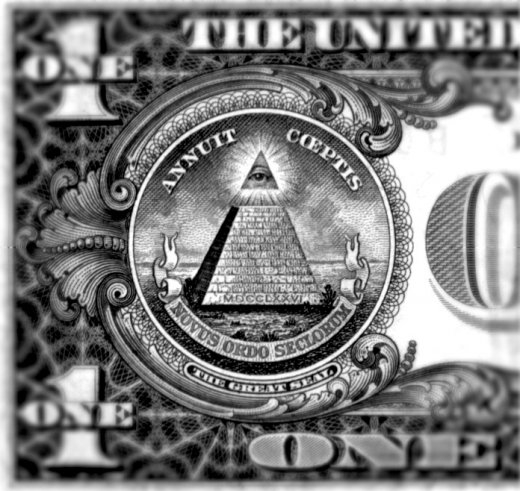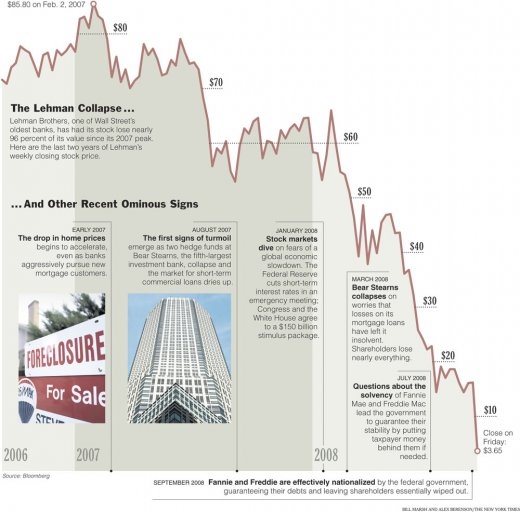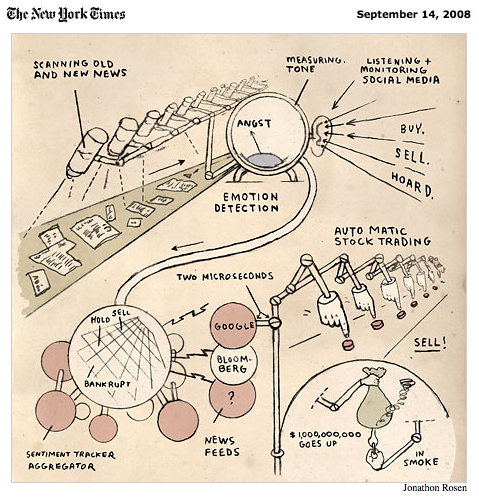
NEW YORK TIMES: In one of the most dramatic days in Wall Street’s history, Merrill Lynch agreed to sell itself on Sunday to Bank of America for roughly $50 billion to avert a deepening financial crisis, while another prominent securities firm, Lehman Brothers, said it would seek bankruptcy protection and hurtled toward liquidation after it failed to find a buyer.
The humbling moves, which reshape the landscape of American finance, mark the latest chapter in a tumultuous year in which once-proud financial institutions have been brought to their knees as a result of hundreds of billions of dollars in losses because of bad mortgage finance and real estate investments.
But even as the fates of Lehman and Merrill hung in the balance, another crisis loomed as the insurance giant American International Group appeared to teeter. Staggered by losses stemming from the credit crisis, A.I.G. sought a $40 billion lifeline from the Federal Reserve, without which the company may have only days to survive.
The stunning series of events culminated a weekend of frantic around-the-clock negotiations, as Wall Street bankers huddled in meetings at the behest of Bush administration officials to try to avoid a downward spiral in the markets stemming from a crisis of confidence. MORE

NEW YORK TIMES: Wall Street’s computer scientists and linguists keep trying to find quicker ways to react to  the news by creating ever-more complicated algorithms, the mathematical formulas that execute stock trades automatically based on such criteria as headlines and news stories. The idea is to buy or sell at a faster clip than the guy or computer at a rival trading desk. All this can go horribly wrong, as United Airlines learned last week when a six-year-old story about the company’s 2002 bankruptcy filing gained new life on the Internet, triggering a cascade of stock sales.
the news by creating ever-more complicated algorithms, the mathematical formulas that execute stock trades automatically based on such criteria as headlines and news stories. The idea is to buy or sell at a faster clip than the guy or computer at a rival trading desk. All this can go horribly wrong, as United Airlines learned last week when a six-year-old story about the company’s 2002 bankruptcy filing gained new life on the Internet, triggering a cascade of stock sales.
In a matter of about 12 minutes more than $1 billion in stock-market value evaporated.
Here is the rough version of events. At 1:36 a.m. E.D.T. last Sunday, Sept. 7, Google’s search “crawler” picked up a 2002 news article about United filing for bankruptcy from the Web site of The South Florida Sun-Sentinel; for some reason the outdated story had been listed on The Sun-Sentinel’s list of most popular business stories. (United emerged from bankruptcy protection in 2006.)
The next morning, an employee of the investment advisory firm Income Securities Advisors saw the story and posted it to the company’s own wire service, which is available over Bloomberg’s trading terminals. United’s stock plummeted soon after.
In a statement, the Tribune Company, which owns The Sun-Sentinel, said the bankruptcy story “contains information that would clearly lead a reader to the conclusion that it was related to events in 2002. … It appears that no one who passed this story along actually bothered to read the story itself.”
Mark Palmer, president of Streambase Systems, which designs software for automated trading, said: “What happens is the first crack in the ice is the news gets fed out to the algorithm, and that triggers it to sell. Someone puts in a big order and that gives the signal to other algorithms. Then another system picks up the sell order. That’s the whiplash. The problem is there’s a cascade effect.” MORE

JOHN MCCAIN: “The issue of economics is not something I’ve understood as well as I should,” McCain said.
